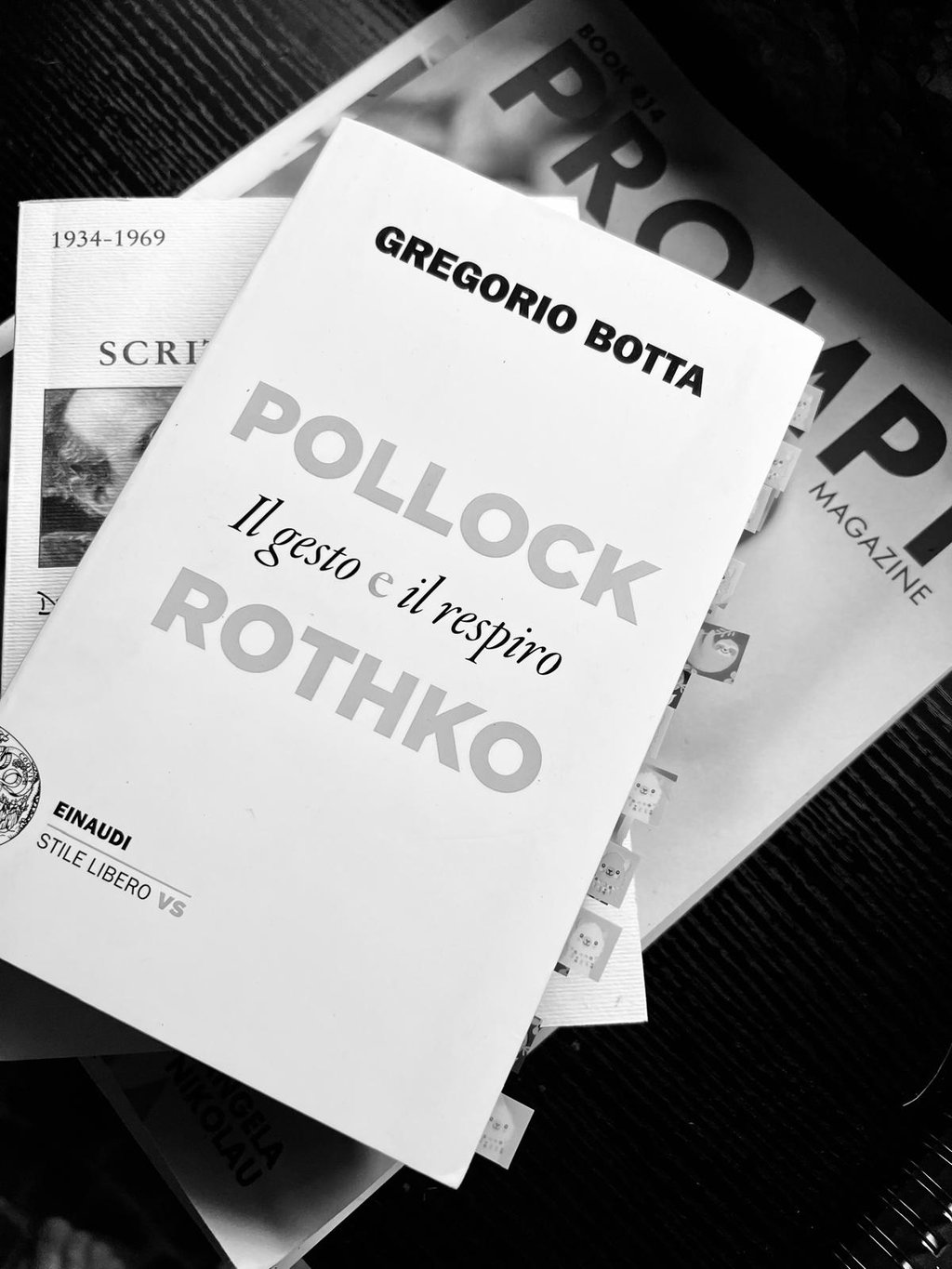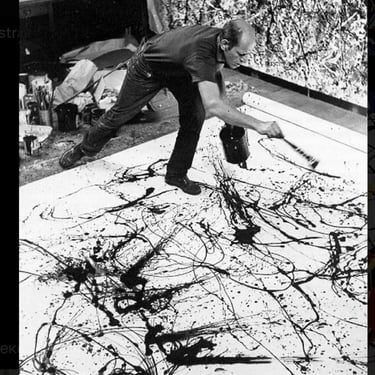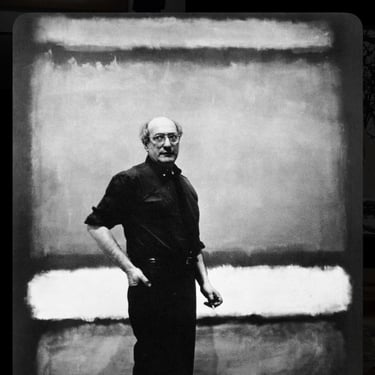Pollock Rothko: The Gesture and the Breath
Here's a concise and engaging summary suitable for a blog post description: Discover the profound world of Abstract Expressionism! This post delves into Gregorio Botta's "POLLOCK ROTHKO IL GESTO E IL RESPIRO," exploring how Jackson Pollock's raw "perfect gesture" contrasts with Mark Rothko's contemplative "breathing" canvases. Despite shared lives in post-war New York, their art reveals fundamental opposing forces—the "yin and yang" of Western art. Join us as we explore their intertwined destinies, their groundbreaking visions, and the surprising historical connections (like Angelico's frescoes!) that reveal art's timeless pursuit of the transcendent. Get ready to experience art in a new, deeper way.
BOOK ON MY TABLE
Charlotte Madeleine CASTELLI
6/27/20254 min read


Every time I pick up Gregorio Botta's book, "POLLOCK ROTHKO IL GESTO E IL RESPIRO", published by Einaudi, it reveals new layers of meaning: it's a text that delves into the deepest folds of our understanding of modern art. It's not a simple comparative analysis of Jackson Pollock and Mark Rothko, but a journey into the primordial forces that shaped 20th-century painting and, believe me, continue to pulsate beneath the surface of contemporary art.
The author immediately takes us to a moment of rupture, a true watershed: the shift of the artistic epicenter from Paris to New York. Just think: it wasn't just a change of address on the map, but a genuine revolution, an audacious act of cultural self-assertion that sought a new, vibrant, intrinsically American visual identity. In that effervescent melting pot of post-war New York, Pollock and Rothko emerged as central figures of a new avant-garde. It's fascinating how, even within this context of rupture, their art was imbued with a deep awareness of European legacies, often reinterpreted or even overturned.
Their lives, you'll discover, were surprisingly intertwined: they shared friends, gallerists like the legendary Peggy Guggenheim (who with extraordinary intuition first exhibited Pollock's genius) and later the Betty Parsons Gallery, which served as a pivotal point of reference for both. They had the same art critics, including the influential Clement Greenberg, whose theories on "flatness" and pure painting shaped the ongoing debate. This network of relationships, of discussions often fueled by "rivers of whiskey" at the Cedar Tavern, their historic haunt, created a common matrix. From this, however, their individualities emerged with almost painful clarity. Further binding them, in a tragic and almost premonitory parallel that amplifies their mythical aura, was their premature and dramatic deaths: Pollock in a car crash in '56, Rothko by suicide in '70. This isn't just an anecdote; it's an echo of the existential pressures that weighed upon these pioneers.
But it's precisely in the radical divergence of their languages that, in my opinion, the true lesson lies. Gregorio Botta carves out this contrast with rare lucidity. Jackson Pollock, with his existential cry "I am nature," wasn't just seeking a mere technique in his dripping. It was an existential methodology, almost a shamanic ritual. When you study his canvases, remember that his "perfect gesture" was a primal eruption, the materialization of an inner force that translated into complex, seemingly chaotic, but intrinsically organic patterns. Pollock didn't paint on a canvas; he painted within and with it, in a corporeal and kinetic dialogue. Every splash, every drip, was a direct imprint of his psyche, an attempt to be painting itself, creating a visceral interchange between the artist, the surface, and ultimately, you, the viewer.
Mark Rothko, on the other hand, embarked on a diametrically opposite path, pursuing silence, light, and the void of the non-self. His works, those immense, floating fields of color, weren't meant to display the artist's ego, but to dissolve it to evoke a transcendent experience in the viewer. His painting isn't an affirmation, but an invocation. Through the rarefaction of forms and the ethereal layering of color, Rothko wanted to create spaces of pure contemplation, almost portals to a spiritual dimension. The "breath" of his canvases is a universal emotion, manifesting in the almost imperceptible tremor of the edges. Rothko himself suggested approaching his works to allow the color to envelop us, creating a meditative and almost mystical immersion. It's a fascinating curiosity how Rothko was obsessed with the "tragic content" of his works, not as narrative, but as an intrinsic feeling evoked by the power of color. For him, painting was a sacred space of intimate communication.
One of the most brilliant gems in Botta's essay is his choice of a "surprising starting point": Angelico's frescoes in Florence. This connection, which at first might seem anachronistic, reveals an extraordinary depth. It invites us to consider that the search for transcendence, for an absolute light in painting, isn't a modern invention, but a red thread running through the centuries. Angelico, with his devout purity, strikes me as almost a spiritual ancestor to Rothko, both seeking a painting that doesn't tell a story, but is an experience.
Ultimately, as Botta masterfully emphasizes, the story of Pollock and Rothko is the "yin and yang of Western art." And if you think about it, it's precisely this interdependence of opposites that makes them so eternally fascinating and relevant to us today. They represent dynamism and stasis, explosion and implosion, the affirmation of the individual and the dissolution into the universal. They are not isolated figures; they are pillars of a continuous and fundamental dialogue on the nature of artistic experience. Their art, though so different, was for both a zone of interchange, a sacred space of communication between the artist, the painting, and us, the viewers, where the boundaries between creation and perception blurred.
My friends... never settle for merely skimming the surface of images. Dive into this book, and I promise you it won't be a common read, but a true act of discovery.: it isn't just a chronicle of exceptional lives but a lens through which you can investigate the most pressing questions about the essence of art.
I urge you to pick up this volume and let it guide you, to hear the roar of Pollock's gesture and the silent whisper of Rothko's breath. I assure you, your perception of painting will never be the same. Are you ready to embark on this journey? If you are, art will speak to you in a new, deeper voice, and the masterpieces you thought you knew will reveal unexpected secrets. Isn't this, after all, the true, compelling mystery that makes art an inseparable companion to our existence?
© Charlotte Madeleine Castelli | All rights reserved


